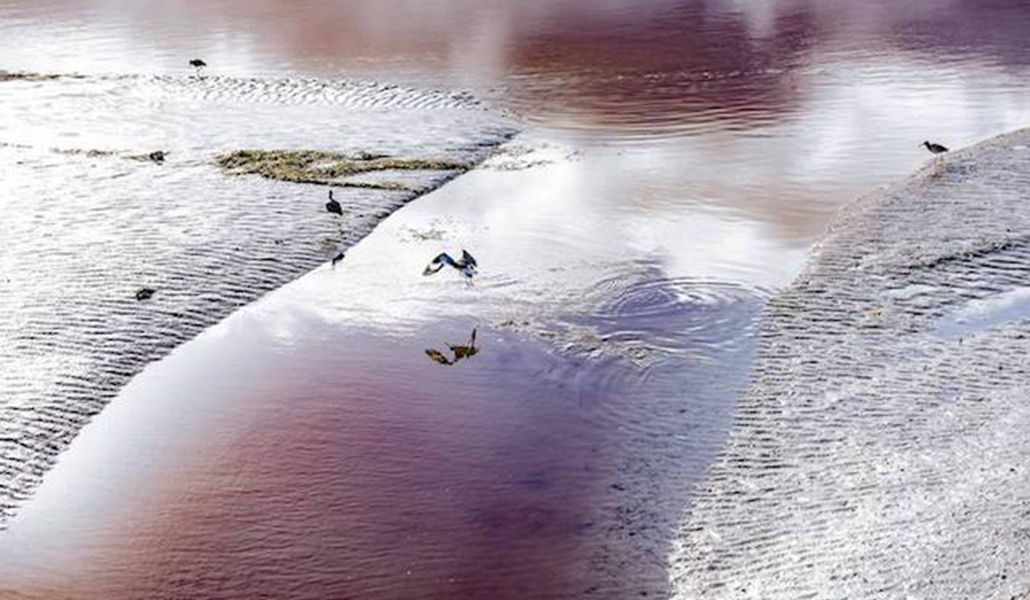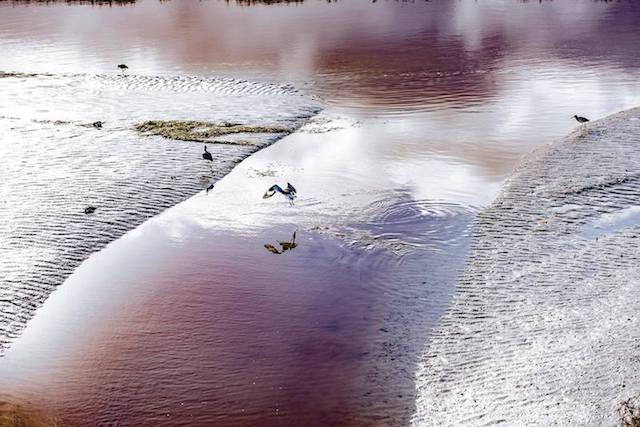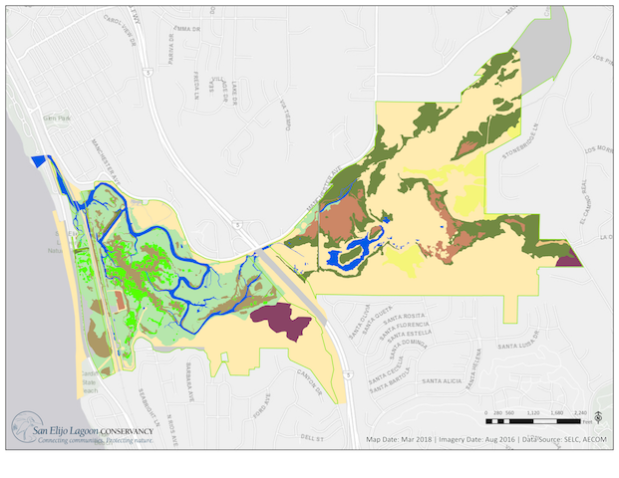Underwater Meadows of Life
Follow ( 0 Followers ) X Follow E-mail : * Follow Unfollow

Prior to development around and across San Elijo Lagoon, the connection to the ocean—the inlet—periodically closed and broke open again. The lagoon no longer opens naturally and we manually open the inlet each year. Because of historic transportation infrastructure, the present pattern and extent of circulation is insufficient to maintain an optimally healthier system.

Lagoon Reflections, by Kamala Venkatesh
Below: The map shows the current constricted tidal channels.

![]()
Below: What the lagoon will look like in the years after restoration.
*The final elevation of the pit surface is designed to promote recruitment of low marsh considering future surface settlement. However, settlement rates are uncertain so the ultimate habitat type to establish on the pit surface may range from subtitle through high marsh.
The circulation of water will be better after restoration, which will help improve water quality. Habitat diversity will be increased by sculpting the topography of the lagoon channels. The removed sediments will go into the newly created overdredge pit in the central basin, and will eventually be capped with sand.
Channel topography and circulation are related, and improved circulation will help increase habitat diversity.

Reviving Your Wetlands is also very much about you—and our future generations.
Thank you for following Lagoon Connections. Share your questions. Invite friends, neighbors and colleagues to join as we keep you up-to-date on the actions underway for healthier waters, habitats and in the near future—new trail connections.
Follow ( 0 Followers ) X Follow E-mail : * Follow Unfollow